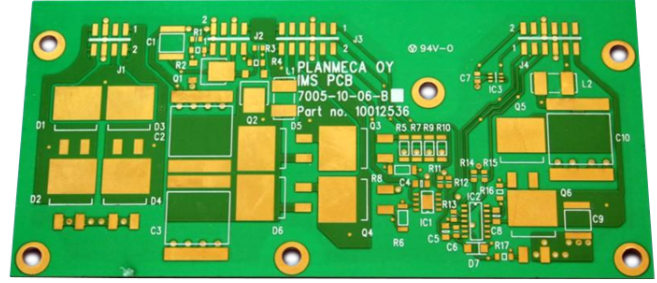In any switching power supply design, the physical design of the PCB board is the last link. If the design method is improper, the PCB may radiate too much electromagnetic interference and cause the power supply to work unstable. analyze:
1. Establish component parameters from schematic to PCB design flow -> input principle netlist -> design parameter settings -> manual layout -> manual wiring -> verify design -> review -> CAM output.
2. Parameter setting The distance between adjacent wires must be able to meet the electrical safety requirements, and in order to facilitate manipulation and production, the distance should be as wide as possible. The minimum spacing must be at least suitable for the withstand voltage. When the wiring density is low, the spacing of the signal lines can be increased appropriately. Set the trace spacing to 8mil.
The distance between the edge of the inner hole of the pad and the edge of the printed board should be greater than 1mm, which can avoid the defects of the pad during processing. When the traces connected to the pads are thin, the connection between the pads and the traces should be designed into a drop shape. The advantage of this is that the pads are not easily peeled, but the traces and the pads are not easily disconnected.

Third, the component layout practice has proved that even if the PCB schematic design is correct, the printed circuit board is not properly designed, it will have an adverse effect on the reliability of electronic equipment. For example, if the two thin parallel lines of the printed board are very close, it will cause a delay in the signal waveform and form reflected noise at the terminal of the transmission line; interference caused by improper consideration of the power supply and ground will cause the product to suffer Performance drops, so when designing printed circuit boards, you should pay attention to the correct method. Each switching power supply has four current loops:
(1). Power switch AC circuit
(2). Output rectifier AC circuit
(3). Input signal source current loop
(4). The input circuit of the output load current loop charges the input capacitor through an approximate DC current. The filter capacitor mainly plays a role of broadband energy storage; similarly, the output filter capacitor is also used to store the high frequency from the output rectifier. Energy, while eliminating the DC energy of the output load loop. Therefore, the terminals of the input and output filter capacitors are very important. The input and output current loops should only be connected to the power supply from the terminals of the filter capacitor respectively; if there is a connection between the input/output loop and the power switch/rectifier loop It cannot be directly connected to the terminal of the capacitor, the AC energy will be radiated into the environment from the input or output filter capacitor. The AC circuit of the power switch and the AC circuit of the rectifier contain high-amplitude trapezoidal currents. The harmonic components of these currents are very high. The frequency is much greater than the fundamental frequency of the switch. The peak amplitude can be as high as 5 times the amplitude of the continuous input/output DC current. Transition time Usually about 50ns. These two loops are the most prone to electromagnetic interference, so these AC loops must be laid out before the other printed lines in the power supply. The three main components of each loop are filter capacitors, power switches or rectifiers, inductors or transformers. Place them next to each other and adjust the position of the components to make the current path between them as short as possible. The best way to establish a switching power supply layout is similar to its electrical design. The best design process is as follows:
Place the transformer
Design the power switch current loop
Design output rectifier current loop
Control circuit connected to AC power circuit
Design the input current source loop and input filter. Design the output load loop and output filter according to the functional unit of the circuit. When laying out all the components of the circuit, the following principles must be met:
(1) First, consider the PCB size. When the PCB size is too large, the printed lines will be long, the impedance will increase, the anti-noise ability will decrease, and the cost will increase; if the PCB size is too small, the heat dissipation will not be good, and the adjacent lines will be easily disturbed. The best shape of the circuit board is rectangular, with an aspect ratio of 3:2 or 4:3. The components located on the edge of the circuit board are generally not less than 2mm away from the edge of the circuit board.
(2) When placing the device, consider future soldering, not too dense.
(3) Take the core component of each functional circuit as the center and lay out around it. The components should be evenly, neatly and compactly arranged on the PCB, and the leads and connections between the components should be reduced and shortened as much as possible. The decoupling capacitor should be as close as possible to the VCC of the device.
(4) For circuits operating at high frequencies, the distributed parameters between components must be considered. Generally, the circuit should be arranged in parallel as much as possible. In this way, it is not only beautiful, but also easy to install and weld, and easy to mass produce.
(5) Arrange the position of each functional circuit unit according to the circuit flow, so that the layout is convenient for signal circulation, and the signal is kept in the same direction as possible.
(6) The first principle of PCB layout is to ensure the routing rate, pay attention to the connection of the flying lines when moving the device, and put the devices with the connection relationship together.
(7) Reduce the loop area as much as possible to suppress the radiation interference of the switching power supply.